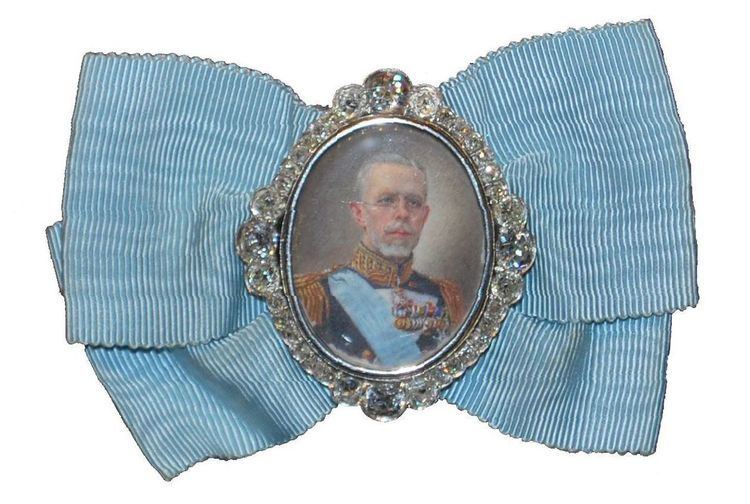Established 1952 | ||
 | ||
Eligibility Female members of the Swedish Royal Family Sovereign King Carl XVI Gustaf of Sweden Grades Member 1st ClassMember 2nd ClassMember 3rd Class | ||
A royal family order is an order conferred by the sovereign of a royal family in a monarchy to female members of the royal family, since female members of the royal family traditionally do not wear the commemorative medals that men wear. Such an order is considered more of a personal memento than a state decoration, although it may be worn during official state occasions. The only way to know whom the order has been bestowed is to see the recipient wearing it.
Contents
- Insignia
- Sweden
- History
- Appearance
- Grades
- Royal Family Orders
- Royal Family Order of King Gustaf V
- Royal Family Order of King Gustaf VI Adolf
- Royal Family Order of King Carl XVI Gustaf
- United Kingdom
- References
The tradition is maintained notably in the royal families of United Kingdom, Norway, Sweden, Denmark, and Tonga.
Insignia
The badge of a royal family order consists of a portrait of the sovereign set in diamonds, which is suspended from a ribbon. In the United Kingdom, the colour of the ribbon changes with each reign, the only kingdom that has this trait. On the back of the portrait frame is an engraving with the sovereign's monogram. A hidden pin attaches it to the wearer's clothes.
Sweden
Kungens miniatyrporträtt (literally the "King's miniature portrait") is a Royal Order unofficially given to members of the Swedish Royal Family. The Royal Family Order is an order awarded by the sovereign to female members of the royal family, as female members of the family typically do not wear the commemorative medals that men do. It is similar to the Royal Family Order of other European monarchies, although the Swedish royal court refers to it as "The King's portrait".
History
The earliest known Swedish order is that of King Oscar II. At that time, orders did not have to be attached to the Seraphim blue ribbon that is the case today. As there are no earlier records of royal family orders in Sweden, it might be assumed that the orders were not introduced in Sweden until the reign of Oscar II. Sofia of Nassau started "Sophiahemmet", a Red Cross nurse training program. At the graduation of the nurses, she presented a miniature portrait of the king on a white ribbon with a red cross. On the back was DSF inscribed in gold enamel on blue background. In the 1900s Gustav V and his wife Victoria made a special form of the order with both of them in the portrait as a gift to their friend Countess Anna Brahe (born Anna Nordenfalk) when she visited them. Currently recipients of the order wear it as part of their formal dress, often when their male counterparts wear medals.
Appearance
The decoration currently consists of an oval portrait of King Carl XVI Gustaf half length. There are different versions of the portrait of the King, where he is dressed in admiral's uniform or simply formal wear with either the Seraphim band or chain. The portrait is framed by brilliant-cut diamonds and a brilliant bow at the portrait above page. The portrait is attached to a bow in Seraphim light blue ribbon and is held to the person's attire with a pin that is not seen. Different designs of the frame exist: some are more decorated than others.
Grades
There are 3 grades of the orders, similar to that of the British Royal Order of Victoria and Albert:
Royal Family Orders
Royal Family Order of King Gustaf V
Members
First Class
Second Class
Royal Family Order of King Gustaf VI Adolf
Members
First Class
Second Class
Royal Family Order of King Carl XVI Gustaf
Members
First Class
Second Class
Third Class
United Kingdom
The first Royal Family Order was issued during and after the regency of King George IV of the United Kingdom. Prior to 1820, he started the practice of presenting the badge of the order to ladies and gentlemen of the Court, particularly female members of the Royal family. An ornate frame of diamond oak leaves and acorns surrounded his portrait, suspended from a white silk bow which varied for men and women. As a girl, Princess Victoria of Kent (later Queen Victoria) received this badge from her uncle.
